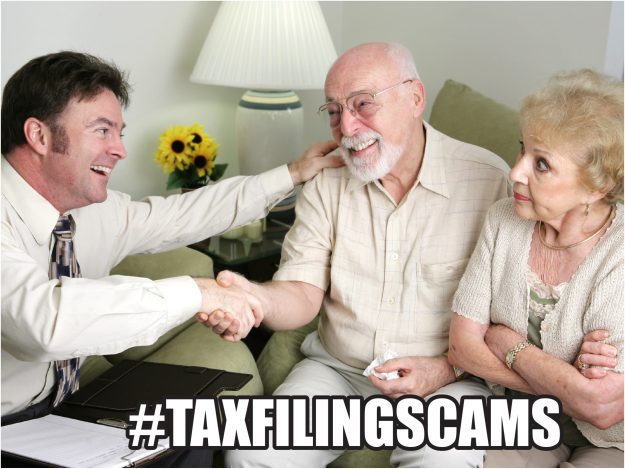Beware Tax Filing Scams
It’s tax time! Unfortunately, that means there are thousands of scammers looking to steal your information and your tax refund by posing as authentic tax preparers. Here’s all you need to know about these scams and how to keep safe.
How the scam plays out
In a tax filing scam, a victim will hire an alleged tax preparer to do their taxes. The scammer then uses the victim’s information to file a tax return in the victim’s name. They’ll change some important details on the tax form, such as a checking account number or mailing address, and then collect the victim’s refund. By the time the victim realizes what’s happened, they’ve lost the money owed to them by the IRS and are now vulnerable to deeper identity theft.
Protect yourself
The best way to stay safe from a tax filing scam is to do your research carefully before hiring a tax preparer.
First, avoid pop-up ads when choosing a tax preparer, especially those that are riddled with typos. Research any preparers you consider hiring by asking for references of previous clients and by looking for a physical address on their website. Be suspicious, as well, if they promise a large return without knowing anything about your finances.
Second, before hiring an individual or an agency to do your taxes, ask to see their Preparer Tax Identification Number (PTIN). If the “preparer” refuses to share their PTIN, you’re being scammed.
Finally, if you’ve already hired a preparer but you’re suspicious about their authenticity, look for these red flags:
- The preparer inflates numbers that affect your tax liability.
- They claim ineligible individuals as your dependents.
- They ask you to sign a blank form and promise to fill out the remainder after you sign.
- The preparer refuses to sign your form.
In the event that your tax preparer follows any of the above practices, terminate your relationship with them immediately.
When you’ve been targeted
If you’ve been targeted by a tax filing scam, report it to the authorities immediately! Let the FTC know about the scam and alert the IRS. If you’ve shared personal information with the scammer, you are now vulnerable to identity theft. Check out the federal government’s page on identity theft recovery to learn what steps to take next.


